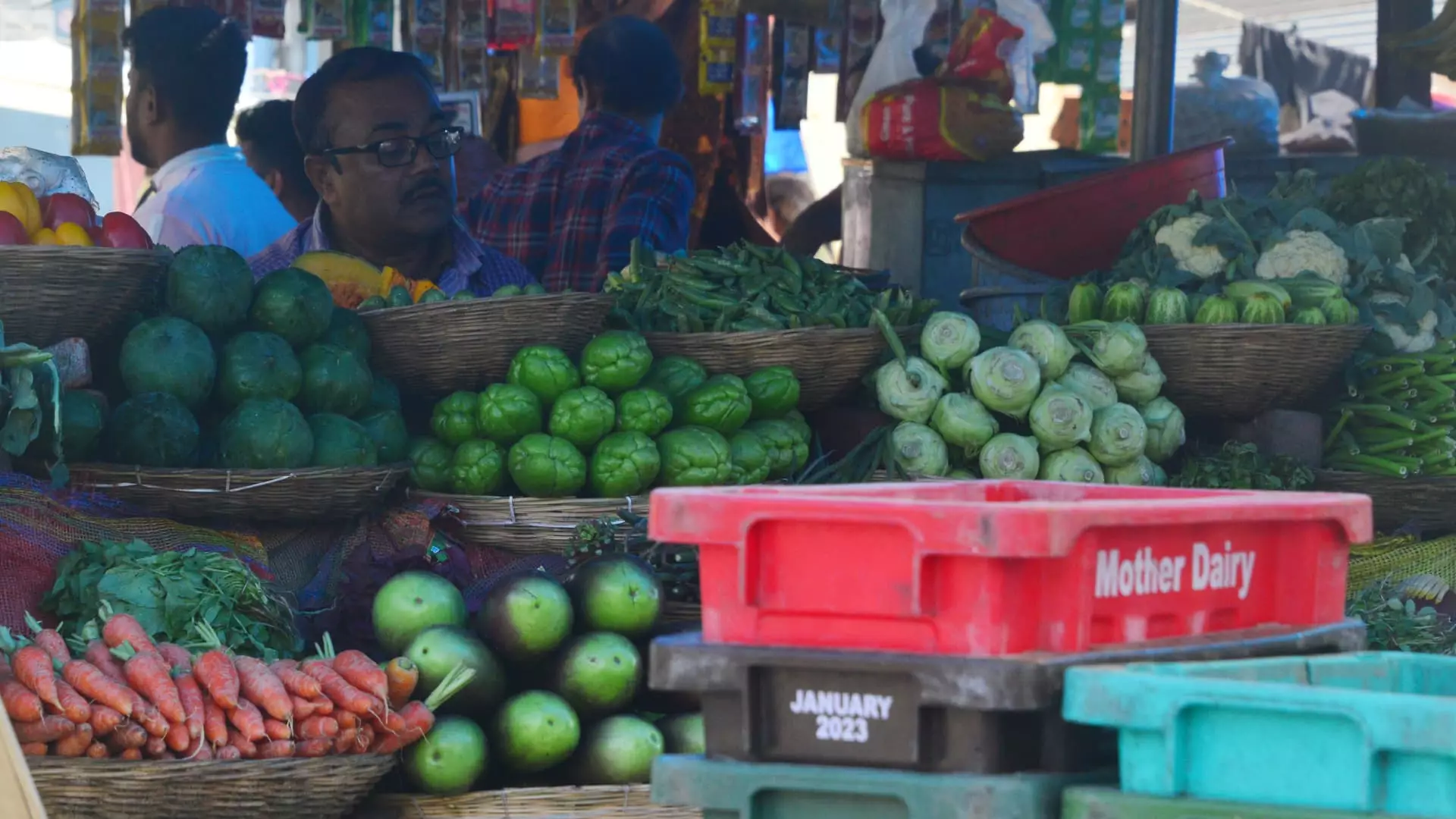India’s inflationary landscape has shown distinct trends in recent months, reflecting both domestic and global economic challenges. The latest figures reveal that inflation in December declined to 5.22% year-on-year, slightly below the anticipated 5.30% based on analysts’ forecasts by Reuters. This reduction marks the second consecutive month of declining inflation rates, presenting a glimmer of hope for policy adjustments by the Reserve Bank of India (RBI). As prices have fluctuated, the general perception of inflation has shifted, and policymakers face critical choices ahead.
Back in October, the inflation rate saw a peak of 6.21%, which notably exceeded the RBI’s comfort zone of 6%. Such figures exponentially heighten concerns over the immediate economic climate, particularly when juxtaposed with the RBI’s fresh projections. The current decline reflects not merely a temporary abatement but possibly an adjustment in response to broader economic signals. RBI Governor Sanjay Malhotra has expressed optimism by predicting an inflation rate of 4.8% for the fiscal year ending in March 2025, suggesting an anticipatory shift towards stabilization.
A focal point in the inflation discussion is the trend of food prices, which stands as a core metric for assessing the inflationary environment. In December, annual food price inflation eased to 8.39%, down from 9.04% in November. This change signifies a significant shift, particularly in essential commodities such as vegetables, sugar, and cereals. The data from the Ministry of Statistics and Programme Implementation (MoSPI) highlights a substantial decline in prices of these essential goods.
Even as the overall inflation in vegetables dropped to 26.56% from November’s 29.33%, some staples continue to experience elevated price increases. Items like peas, potatoes, and garlic have recorded significant year-on-year hikes, reminding stakeholders that the food inflation narrative is complex. Agriculture plays a vital role in India’s GDP, and while the short-term outlook remains fraught with challenges, fluctuations in agricultural output and seasonal effects stand to influence future price trajectories.
The recent reduction in inflation offers the RBI more latitude to consider interest rate cuts, particularly in the context of slowing economic growth. During the second quarter of the fiscal year, India’s economy expanded by a mere 5.4%, falling short of economists’ expectations and nearing a two-year low. This stagnation presents a unique dilemma for the central bank: whether to prioritize growth through monetary easing or to combat a depreciating currency, which has recently reached a record low against the dollar.
Economic analysts speculate that the RBI is poised to initiate an easing cycle at the upcoming Monetary Policy Committee (MPC) meeting scheduled for February. Some even forecast a 25 basis point cut to the repo rate, potentially reducing it to 6.25%. However, inflationary pressures stemming from a weaker rupee may complicate this strategy. A depreciating currency can exacerbate imported inflation, making the tasks of managing the economy more intricate for the central bank.
While Bank of America analysts foresee a recovery in the Indian economy by 2025, they caution that the robustness of this recovery is fraught with uncertainties. They indicate that sectors such as agricultural production and air traffic are likely to remain strong, yet warn that credit growth and consumption metrics may continue to lag. In November, forecasts for India’s GDP growth were downgraded from 6.8% to 6.5%, aligning closely with the RBI’s projections but nonetheless highlighting a potential slowdown.
As policymakers navigate the complex interplay of inflation, growth, and currency stability, the road ahead will demand precise adjustments and careful monitoring. The anticipated seasonal corrections in vegetable prices and promising winter crop outputs offer a potential respite; yet, the specter of global economic influences looms large. India stands at a crossroads, balancing the urgent need for recovery against fiscal prudence to ensure long-term economic stability.
In summation, while India’s latest inflation data provides a cautious sense of optimism, the complexities of the economy necessitate vigilant oversight. The evolving scenarios across food prices, growth rates, and currency strength will undoubtedly shape the fiscal landscape in the months to come, keeping policymakers and analysts alike on high alert for what lies ahead.


Leave a Reply